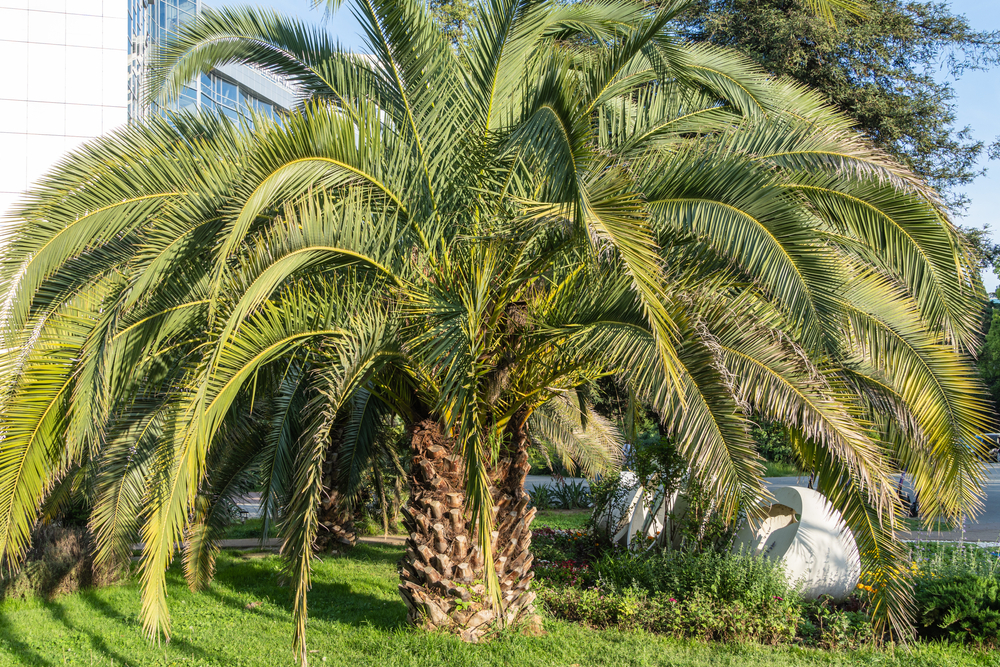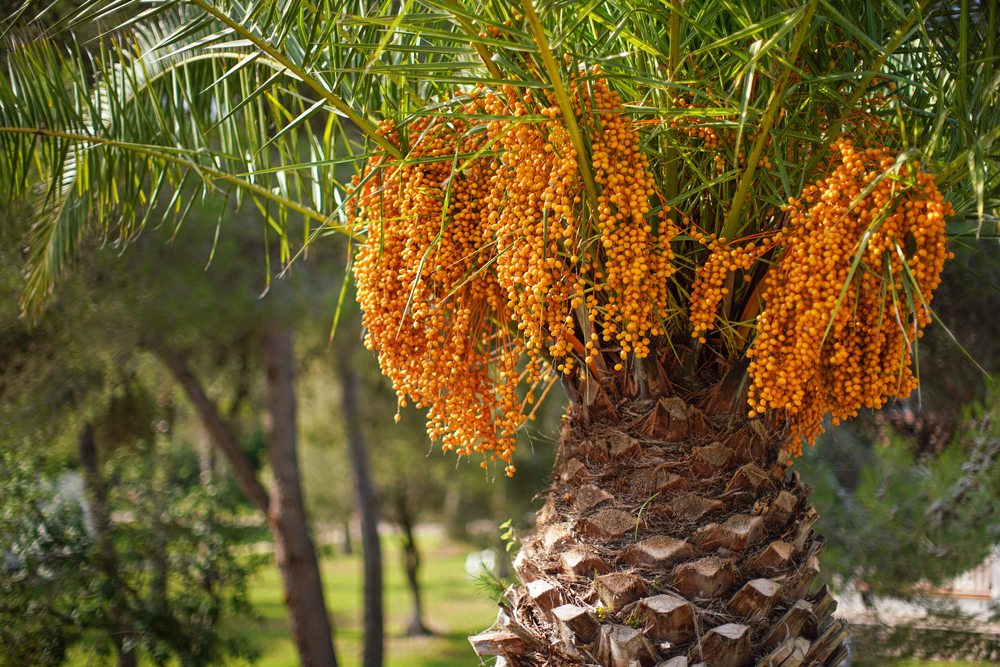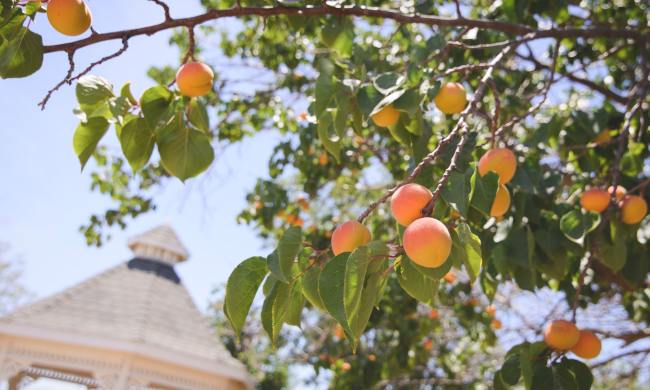Adding a new plant to your landscaping can be intimidating, especially when it’s the size of a tree! So the first thing you’ll want to do when considering a new plant for your garden is research its needs to be sure you can give it what it needs to thrive in your care. The Butia capitata is a large palm tree that can be a great addition to any garden. To ensure it’s happy, read on to find out how to care for this beautiful plant.

What is a Butia capitata?
Native to Uruguay, Argentina, and Brazil, the Butia capitata is amazingly hardy to cold temperatures and is easy to grow. This plant has many nicknames such as pindo palm, jelly palm, South American jelly palm, wine palm, and Cocos capitata. It’s a small evergreen palm with leaves that can grow three to six feet long. The leaves typically form a dense crown and arch down to create a weeping effect. The jelly palm can reach heights up to 10 to 20 feet though it will take years to grow that tall.
This plant blooms in the summer with small yellow, white, or red flowers that have a delightfully fruity scent. The flowers, when pollinated, produce fruits that are edible and are about the size of dates; they have a flavor similar to pineapple. These fruits can be used to make a delicious jelly, hence one of this plant’s nicknames.
They have no significant disease or pest issues; however, be aware that it does drop gooey sticky blobs on the ground all around the tree. This makes it a messy tree, and you’ll want to keep them away from driveways, patios, decks, and other items that this sap could ruin.
Why you should grow a Butia capitata
The jelly palm is an attractive tree that will add visual interest to your garden without adding a whole bunch of maintenance. It is easy to care for, and you can use it in landscape design. You might also want to grow this plant for its small but delicious fruits. As one of its nicknames suggests, you can use this fruit to make a jelly.

How to care for a handsome jelly palm
It can be hard to know how to care for a new plant, which is why we’ve put together this guide with everything you need to know to tend to this plant properly.
Hardiness
The jelly palm can thrive in zone 8 to 11, and they are salt, heat, and drought tolerant.
Water
Do not allow this plant to sit in water; like most plants, it doesn’t like its roots to be constantly wet. This plant is particular because not only can it get root rot, but it can also get trunk rot, so you have to be very careful with overwatering. Leave the palm to dry out until at least the first three inches of soil are dry. Once it’s dried out, deeply water the soil around the trunk.
Soil
As long as the soil is well-draining, the jelly palm will happily grow in it. They do prefer a neutral pH level, but will still grow in soil that leans more one way or the other.
Light
Luckily these trees are tolerant and thrive in various types of light, from partial shade to full sun.
Food
The jelly palm likes to be fertilized four times yearly. Find a fertilizer with a ratio of NPK of 8, 4, and 12, or you can use a palm-specific fertilizer. Read the instructions on the fertilizer you purchase, and always avoid getting fertilizer on the plant.
Temperature
This hardy palm can survive temperatures as low as 5 degrees.
Toxicity
No part of this plant is toxic to humans, dogs, or cats, but it’s still good to be aware of the gooey droppings if you have a curious dog. Though it isn’t toxic, it could cause the dog to have a stomachache and even vomit if it eats too much of it.
Additional care
When the fronds of this tree die, you’ll need to prune them off. However, don’t prune healthy fronds; this will cause the tree to undergo stress. Stressing the tree might cause it to lose even more leaves or — worst case scenario — die.
Now that you have all the information you need to care for a Butia capitata, you can add one to your garden without worrying about it surviving. It’s an easy-care plant ideal for beginners!


